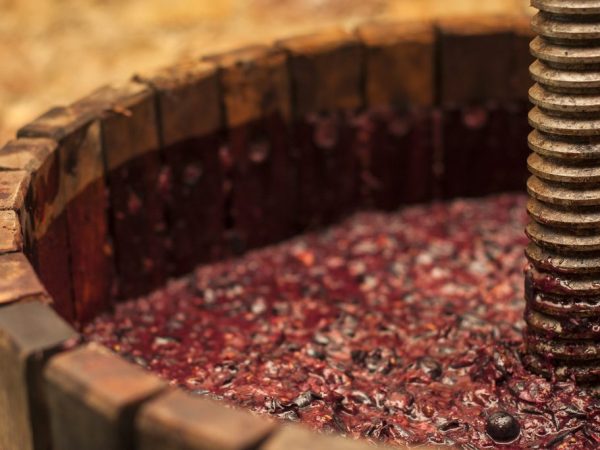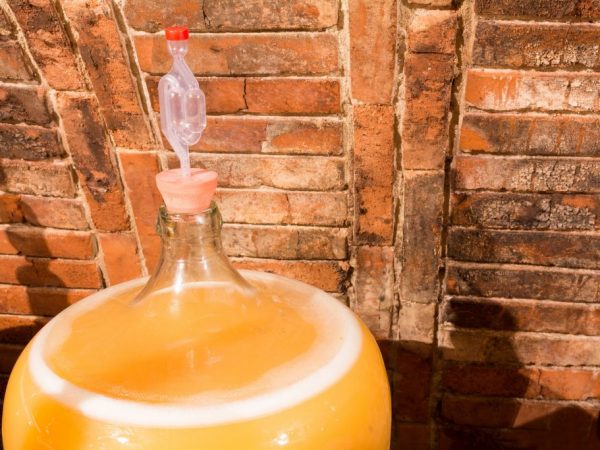Grape must
Grape must is a must, a freshly squeezed unprocessed juice that is used in the production of wine drinks. Such juice lends itself to fermentation, clarification and aging. Fermentation of grape must has a number of characteristics.

Grape must
A scientific approach to fermentation
The activity of the French scientist Louis Pasteur in the field of microbiology started in 1857 and was marked by works in the field of molecular dissymmetry. The scientist was prompted to study fermentation by a phenomenon that he accidentally noticed during an experiment using racemic tartaric acid. After an experiment with its isomers, Louis Pasteur came up with the idea that a microscopic representative of fungi that grew in a solution of racemic acid was the true cause of its breakdown. This thought became the initial position that led the scientist to comprehend the physiological nature of the effect of microorganisms on the surrounding substrate.
Pasteur continued his own research into the fermentation process from completely new perspectives. The scientist refuted the conjecture about the chemical interpretation of the essence of the process under study by establishing a simple and completely convincing experiment on an inorganic medium that does not contain proteins, into which a small yeast culture was introduced. The rapid fermentation and the growth of yeast mass in this environment absolutely turned the opinion of opponents of the biological interpretation of fermentation upside down.
Louis Pasteur proved that the fermentation process is the result of the vital activity of living microorganisms - yeast, which fulfill their nutritional and reproductive needs at the expense of sugar and mineral salts, which are present in the appropriate nutrient medium, and under their influence the substrate ferments.
Grape must contains an average of 54-86 gr. water, 0.2-0.9 gr. proteins, 11-30 gr. carbohydrates, 0.6-1.6 gr. organic acids, 0.2-0.6 gr. dietary fiber, 245 mg. potassium, 40 mg. calcium, 23 mg. phosphorus, 18 mg. magnesium, as well as ferrum, cobalt, other minerals, ascorbic acid, thiamine, riboflavin, flavonoids, niacin, etc.
Fermentation process agents
For the manufacture of absolutely any kind of wine, it is necessary to resort to the help of living microorganisms - wine yeast. The quality of the drink depends precisely on the race of yeast used to make it, interacting with sugars and receiving energy from them for vital processes. Such microorganisms are produced in a sterile, dry or solid form, after which the leaven from the microorganisms is added to the wort for further fermentation. Despite the many varieties of yeast available for making wine, now the most popular are Lalvin KV-1118 and Lalvin EC-1118.
The Lalvin KV-1118 brand produces a purified yeast concentrate, previously purified and used in the production of champagne, light red or white wine.This brand of yeast has a detrimental effect on pathogenic microorganisms, while normalizing the course of the reaction. The KV label provides future drinks with pronounced aromatic qualities. The yeast concentrate does not contain any impurities. Lalvin KV-1118 packaging can be stored in a dark and dry place for up to 2-3 years, and after opening it can be used for 7 months.
Lalvin EC-1118 wine yeast guarantees detailed taste for white and red wines, giving them clarity and clarity. It is worth using this brand for the production of drinks from the fruits of apple, cherry, viburnum and other crops. The EU marking indicates that the wine product forms a small amount of foam, brightens the drink well and collects sediment. Such yeast is stored in a dry place for up to 3 years, and an opened package is suitable only for 6 months.
In addition, increasing the sugar content of the grape must is an important step, because often the raw materials do not have enough sugar. The latter is used only unrefined. Here it is important to determine in advance the expected characteristics of the drink in order to know the proportions of adding granulated sugar.
The value of temperature conditions

Temperature extremes are harmful for future wine.
Reduced temperature (up to 15 ° C) during fermentation slows down the process until it stops completely. At the same time, at temperatures above 30 ° C, fermentation occurs rapidly, large volumes of carbon dioxide are released, provoking a decrease in the taste of the wine drink. For the process of alcoholic fermentation, the generally accepted and most suitable temperature is 18 ° -20 ° C.
Whatever the time of day or the season of the year, future wine should not undergo temperature extremes that would have a detrimental effect on its quality. Drafts and sunlight are also unfavorable. To ferment the wort, it should be slightly warmed up, creating the necessary living conditions for microorganisms.
In addition to the above, temperature conditions affect the acidity level of the beverage. At low values, the wine turns out to be sour, while at high values it turns out to be bitter, because the percentage of aldehydes increases significantly, and alcohol becomes less.
With partial dehydration of the juice, a concentrated grape must is obtained, processed to reduce the excess of acids and other components. In the composition of rectified concentrated grape must, no more than 1% of ethyl alcohol is allowed. Concentrated grape must, according to a refractometer, at a temperature of 20 ° C should not contain more than 51% of dry inclusions.
Features of fermentation of must for red and white wines
Fermentation of pulp is a process that is used to make red wine drinks, which differ from whites not only in color, but also in significant astringency. This process consists in the fact that the grape juice is not separated from the skin, pulp, seeds and ridges, and it ferments like that. Fermentation of the pulp is carried out in containers empty for a quarter, immersing the compacted pulp there. Here it is important to maintain a stable temperature, preventing it from falling below 15 ° C or rising to 30 ° C and above. This is how the grape must be lowered, the juice of which will begin to appear within 4-5 days after the start of fermentation.
Red wines have a number of characteristic properties: they are prone to heavy precipitation, the color often goes into the red spectrum, the astringency gradually disappears, all the flavors appear, and can also be well stored and aged in barrels.
White wines are obtained from both light and dark grape varieties, however, before fermentation, the berries are pressed so that the juice ferments without the skin and other components. For this process, the temperature is kept within 13 ° -20 ° C, since.prolonged fermentation at low temperatures gives the wine a delicate fruity taste. The production of white varieties is significantly complicated by the fact that the wort must be subjected to frequent filtration. Grape must is a product, the density of which should not exceed 1.4 kg / m³, and the acidity is kept in the range from 12 to 18 g / dm³.
Wort care
During fermentation, grape juice needs careful care, which is due to certain factors.
- For a better distribution of the added sugar, the yeast sediment is stirred up so that both the upper and lower layers of microorganisms can develop and multiply, work on imparting the necessary qualities to the future drink.
- Despite the fact that yeast can work under anaerobic conditions, but short-term oxygen supply will significantly improve their vital functions, therefore, the wort is ventilated.
- If you plan to get a wine of high strength, add granulated sugar. It should be borne in mind that the sugar content of the must should not exceed 15%.
- It is imperative to monitor the temperature, which should not change dramatically and go beyond 18 ° -20 ° C.
- To check the progress of fermentation, you should taste the wine and determine if it has the desired qualities.
Pulp removal
The pulp is removed from the must, but it is important to avoid contact with oxygen using a water seal, so that carbon dioxide is released. At the end of the fermentation process, the juice is filtered and pressed. The pressed fractions of the pulp are characterized by a high content of acids and tannin and have a particularly intense color. These fractions are added to the wort to influence the taste of the drink.
Contact of the wort with oxygen is considered undesirable because it increases the risk of intrusion of foreign bacteria. To avoid their penetration and multiplication, containers with future wine are fumigated using sulfur, which destroys bacteria, and also gives the wine a unique taste.
Regulation of acidity
The quality of a wine drink depends on the acidity index. If weather conditions provoked a high acidity of grape berries, then it is permissible to reduce its value by coating with calcium carbonate (no more than 2 g / l), which does not contain chemical impurities.
If, on the contrary, the acidity is reduced, then before carrying out the fermentation process, it is permissible to add tartaric or citric acid in the calculation of no more than 2 g / l. It is also possible to regulate acidity by blending high-acid and low-acid juices.
Conclusion
Making wine is a fascinating process, but painstaking and complex, therefore, before that, they study all the subtleties of winemaking, so that the wine in the end has exactly those taste qualities that you will like.


